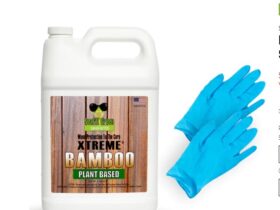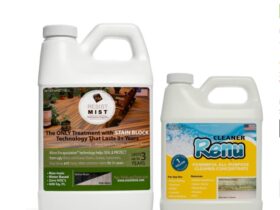Tile and grout are common features in many homes, often found in kitchens, bathrooms, and other high-traffic areas. To keep these surfaces looking their best and to prevent damage, it is important to properly apply tile and grout sealer. Sealing your tile and grout can help protect them from stains, dirt, and moisture, extending their lifespan and keeping them looking new. In this article, we will discuss the steps you need to take to apply tile and grout sealer correctly for maximum protection.

1. Choose the Right Sealer
There are many types of sealers available on the market, so it’s essential to choose the right one for your specific tile and grout. The two most common types of sealers are penetrating sealers and membrane-forming sealers. Penetrating sealers soak into the pores of the tile and grout, providing protection without changing the appearance. In contrast, membrane-forming sealers create a protective layer on the surface of the tile and grout. Consider factors such as the type of tile guard grout sealer you have, the location of the tiled area, and the level of protection needed when selecting a sealer.
2. Prepare the Surface
Before applying the sealer, it is crucial to clean the tile and grout thoroughly. Use a mild detergent and water to remove any dirt, grease, or grime from the surface. You can also use a grout cleaner to scrub the grout lines and remove any built-up residue. Allow the tile and grout to dry completely before proceeding with the sealing process.
3. Apply the Sealer
When applying the sealer, make sure to follow the manufacturer’s instructions carefully. It is recommended to work in small sections to ensure thorough coverage. Use a brush, roller, or sprayer to apply the sealer evenly on the tile and grout surface. Pay special attention to the grout lines, as they are more prone to staining and water damage. Allow the first coat to dry as per the instructions before applying a second coat if necessary.
4. Wipe Off Excess Sealer
After applying the sealer, use a clean and dry cloth to wipe off any excess sealer from the tile surface. Pay close attention to any pooling or dripping of the sealer, as this can result in a hazy or uneven finish. Wiping off the excess sealer will help achieve a smooth and uniform appearance once the sealer has fully dried.
5. Let the Sealer Cure
Once you have applied the sealer and wiped off the excess, allow the surface to cure according to the manufacturer’s instructions. This curing time is essential for the sealer to create a protective barrier on the tile and grout. Avoid exposing the sealed surface to water or foot traffic during this curing period to ensure the best results.
6. Maintain the Sealed Surface
Regular maintenance is key to preserving the effectiveness of the sealer and extending the life of your tile and grout. Clean the sealed surface regularly with a mild detergent and water to prevent dirt and grime buildup. Avoid using harsh chemicals or abrasive cleaners that can damage the sealer. Periodically check the sealed surface for any signs of wear and reapply the sealer as needed to maintain maximum protection.







